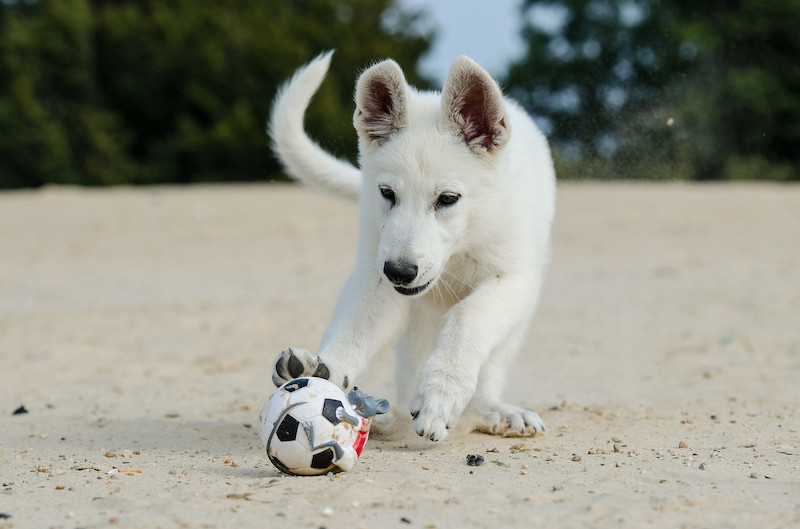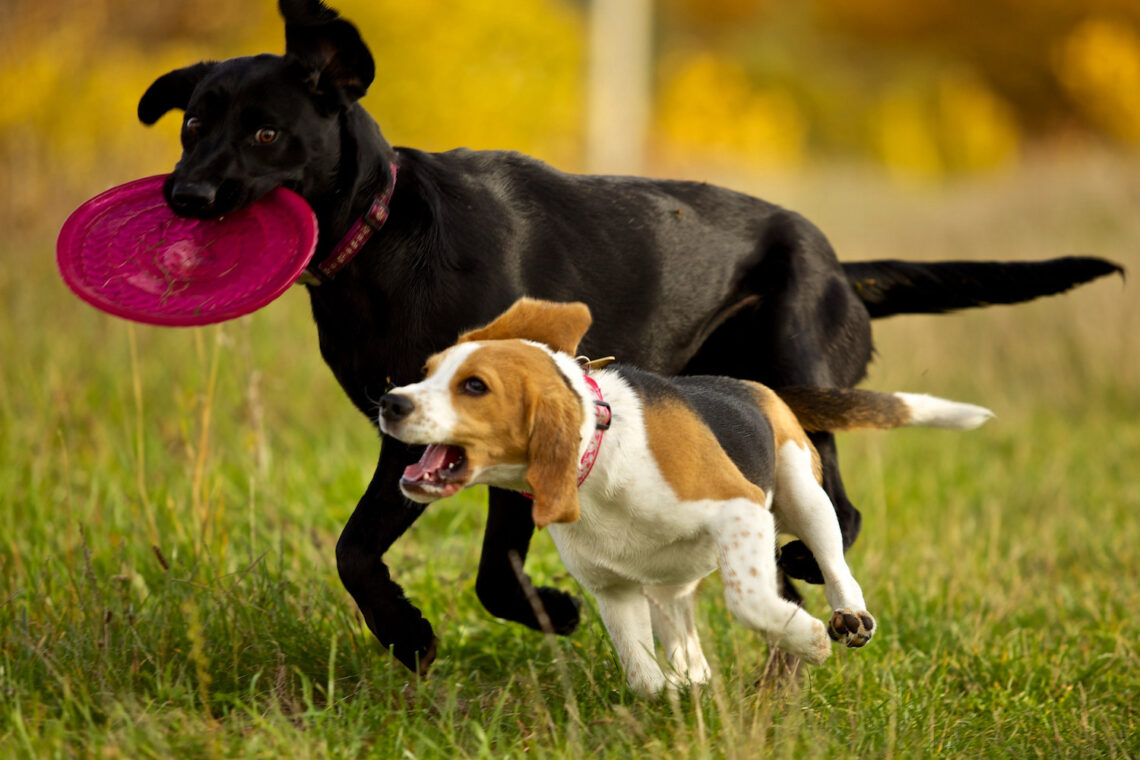Physical activity makes a dog feel good and active. When you share your life with a dog, exercise is one of the most important things you need every day. It makes all dogs happy! It’s like a “guarantee” against a lot of problematic behaviors. This is also what makes it easier to solve multiple problems. The benefits of getting your dog out enough are priceless! But how many outings for a dog? What does “enough” mean? And is the number of outings and their duration really all that matters?
Walking your dog is essential. It’s a great way for him to work out. But how much time does your dog need to exercise in order to thrive physically and mentally? Depending on the breed, age, and character of your pet, the exercise time can vary from 30 minutes to two hours. Here are our tips.
Different needs depending on the breed
A Chihuahua does not need to exercise as much as a Labrador. It’s obvious, but it’s not always easy to determine exactly how much exercise time your best friend needs. Either way, the walking time per day should be at least 30 minutes! Depending on the breed, this duration can be up to 2 hours a day.

Between 30 and 40 minutes: for small dogs and Saint-Bernard
Small dogs like Yorkshires, Miniature Spitz, Pugs, and Chihuahuas don’t need to run for hours. A daily exercise of 30 to 40 minutes is enough for their well-being. The same goes for giant breeds of Saint Bernard or Chow Chow type: contrary to what one might think, it is not necessary to make them run for hours: they are quite “home-grown” dogs. Of course, there are exceptions: the jack Russel for example is a small animal, yet it has a great need for daily physical expenditure.
40 minutes to over an hour: for Shiba and beagles
These are the medium and large dog breeds that require the most walking time. Shiba, Beagle, Doberman, etc. need about an hour a day. Among these breeds of medium-sized dogs, some require even more time to spend physically, up to two hours a day: labrador, retriever, husky, malinois …
Age, another factor in determining exercise time
The age of your dog is also a factor to take into account in the length of the walks. Puppies are rowdy and need a lot of physical expense, but they are also more easily exhausted. The ideal is to gradually increase your walking time according to your age. Young dogs are the ones who need to exercise the most. A medium to a large-sized dog is generally considered “old” from 7-8 years old, 10 years old for the smallest.
As a dog ages, you need to be more attentive to him, and attentive to his moods, which can vary from day to day. Always exercise him, while adapting to his new needs: a very sporty dog the year before may suddenly no longer want extended walks. If he doesn’t have any medical concerns, that’s okay, just a sign of old age.
Good to know
There is a recognized principle in dog activity for puppies: it is considered that a baby should do a maximum of five minutes of daily physical exercise per month of age. If your puppy is 2 months old: 10 minutes per day; 5 months: 25 minutes, etc.
Your dog’s character also comes into play
Having a very active animal, which does not spend enough energy, can have multiple consequences: the destruction of the house, obesity, joint pain… but also mental suffering. This is why it is important to know your dog’s character well in order to determine if he is more or less active and to adapt activities accordingly.
If he’s very active, you’re going to have to “run” to exhaust him. Conversely, some dogs with a quiet character despite their average size will be very happy to find the sofa, after 40 minutes of walking at a calm pace.
That said, you should know that very often the dog adapts to its owner: if you are a jogging enthusiast, it is likely that your pet will develop a taste for running, as long as you take him often with you.
Outdoor activities to practice with your dog
Anything outdoors is good for exercising your dog: simple walks, jogging or jogging, jumping obstacles, the ball, playing with other dogs, etc. There are also sports activities for dogs: agility, canine-mountain biking, frisbee, canine-cross Choose according to your tastes!

The best indoor dog exercises
If you live in the city or it’s raining, it’s not always easy to go for long walks. Don’t panic, there are plenty of activities to stimulate your dog, both physically and mentally.
- Play hide and seek: One of you hides without the dog realizing it, then make him smell a piece of clothing of the hidden person by asking him to search: the dog will understand the request, and put into action both its nose and its legs. Praise him loudly when he finds it.
- Play with him: take his favorite toy, bring it to his head, and step back or let him shoot.
- Teach him tricks: sit, lie down, give a paw, etc. This dog training session will stimulate your pet’s intellect, and it will tire him physically. You can also take the opportunity to teach your dog to say no, which is not always easy … especially when he tilts his head.
- The stairs: you go up and down the stairs quickly. It’s not the most exciting activity for you, nor the most mentally stimulating for him, but, for physically tiring him, it’s great.
Protect your dog
Whether your dog is an experienced athlete or a doggie who prefers his sofa to races in the forest, consider protecting him in the event of domestic or outdoor accidents. Carrefour Assurance offers dog cat insurance to be sure that in the event of a problem, your pet is in good hands.







